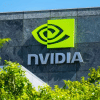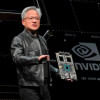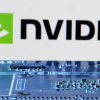The story of Nvidia, the world’s most valuable company

There is a new winner in the race to become the world's most valuable company. On June 19, 2024, American tech giant Nvidia surpassed Microsoft to become the company with the highest market cap in the world — an eye-watering $3.34 trillion.
While previous members of the $3 trillion club, Apple and Microsoft, have vast consumer popularity to go with their enormous value, Nvidia operates from the background, relatively speaking. To video game and computer enthusiasts, Nvidia has long been the most popular and dominant graphics processing unit (GPU) manufacturer in the world. In fact, that is how the journey of Nvidia began.
In the early 1990s, when computers had just started entering the public consciousness, Nvidia's founders — Jensen Huang, Chris Malachowsky, and Curtis Priem — predicted a crucial detail in the future of computing. Video games, already popular at the time, were about to become the largest driver of revenue among computer applications, and increasingly complicated and visually engaging video games required computers that were capable of performing massive computations at breakneck speed. The central processing unit (CPU) of the computer bore that burden until then, but Jensen Huang and co. realised that this task could be more efficiently executed through dedicated GPUs that functioned parallel to CPUs.
All of this was discussed in an outlet of Denny's — an American-style diner chain — where Jensen Huang had worked as a busboy when he was a teenager. In 1993, however, when Nvidia was founded, Huang was a division head at LSI Logic, building specialised integrated chips (IC) for various computer products. He left that job to found Nvidia, a name that the trio came up with later by dropping the "i" from invidia, the Latin word for "envy".
Nvidia then embarked on the journey to solve the GPU problem, and it was a stop-start journey that began with a product called NV1 in 1995. It was a "graphics accelerator", which used quadrilateral (four-sided) shapes as the building blocks of computer graphics, as opposed to the triangles that were used by competitors. The triangle approach won, and the NV1 ended up being a failure. Because of this, Nvidia lost a substantial contract with Japanese video game console manufacturer Sega, and were at one point close to going bankrupt. But Sega saw the potential in Nvidia, and invested $5 million in the company.
The company was struggling when it shifted strategies to develop a graphics accelerator that worked with triangles. This new product, called the RIVA 128, was launched in 1996 and became a massive success. But even as it was released, the unofficial company motto had become "Our company is thirty days from going out of business". RIVA 128 changed that reality, and gave Nvidia the launchpad it needed to start the GPU revolution.
In 1999, the company released a product whose name gamers today will be able to relate to. The GeForce 256 was Nvidia's first proper GPU, and the name GeForce has managed to stick around to the present. Throughout the 2000s, Nvidia became bigger and bigger, acquiring much of its competition, and became a member of the S&P 500, an American stock market index for only the 500 biggest companies in the country.
At this point, Nvidia was among only a handful of companies who produced consumer grade GPUs, alongside AMD — another American chip manufacturer. Nvidia made GPUs for Sony's PlayStation 3 and Microsoft's Xbox. The company invested heavily in research and development (R&D) throughout, continuously improving its technology and taking video gaming technology to a whole new level.
In 2016, the GTX 1080 and 1070 were launched, bringing Nvidia massive success in the realm of PC gamers for whom discrete GPUs such as these marked a huge technological jump. These came on the back of GTX 700 and 900 series graphics cards, and Nvidia had become the overwhelmingly dominant force in this space.
Subsequent releases such as the GTX 1600 series, and the RTX 2000, 3000 and 4000 series have given Nvidia an unassailable share in the discrete GPU market. As of the first quarter of 2024, 88 percent of discrete GPUs in use today are Nvidia products, leaving competitors AMD and Intel (a new entrance) in the dust.
But video games and PCs were not enough to take Nvidia to the heights where it is now able to challenge software and mobile giants like Apple, Microsoft, and Google. What got them there was the buzzword of our times, Artificial Intelligence (AI).
Companies that use AI to develop cutting edge products like OpenAI's ChatGPT or Google's Gemini require computers that are capable of computing enormous mathematical calculations. Nvidia's GPUs, which were already capable of executing complicated mathematical functions for graphics usages, could also be used for the maths required for these AI training models.
At first, AI researchers needed to format their data to fit Nvidia's graphics focused products. In 2006, Nvidia introduced a new architecture, called CUDA, that would simplify the use of its products as parallel processors for computational problems.
Things have only gone from good to better since. When cryptocurrency started ballooning in value during the Covid-19 pandemic, Nvidia GPUs became the primary tool with which miners completed the computational tasks needed to produce more bitcoin, and Nvidia's sales skyrocketed as a result. Shortly followed by that were the large language models (LLM) that brought the power of AI to the forefront of public imagination, and as every tech company in the world started getting their hands dirty to develop their own AI products. Nvidia's GPUs, which would aid them in this process, fell massively into demand.
Nvidia was prepared for this. The GV100, followed by the A100 and subsequent models, have started targeting AI data centres where GPUs power the processing of massive amounts of data, engaging them in complex matrix calculations that are the building blocks of today's AI models. The rise of AI, and the competition between other tech giants to get their noses ahead in the AI rat race has benefitted Nvidia, who alongside developing their own AI products, supply the tools necessary to create machine learning models.
Nvidia stock has almost tripled since the beginning of 2024, and shows no signs of slowing down. Some who are sceptical think that this is all a result of an AI bubble, but Nvidia's standing is backed up by solid technology and consistently growing revenue. Jensen Huang, the superstar CEO and founder of Nvidia whom Mark Zuckerberg has called the "Taylor Swift of the tech world", cuts a calm but intimidating figure, as it's his shoulders and his company's on which the much promised AI future of mankind is being built.

 For all latest news, follow The Daily Star's Google News channel.
For all latest news, follow The Daily Star's Google News channel. 








Comments